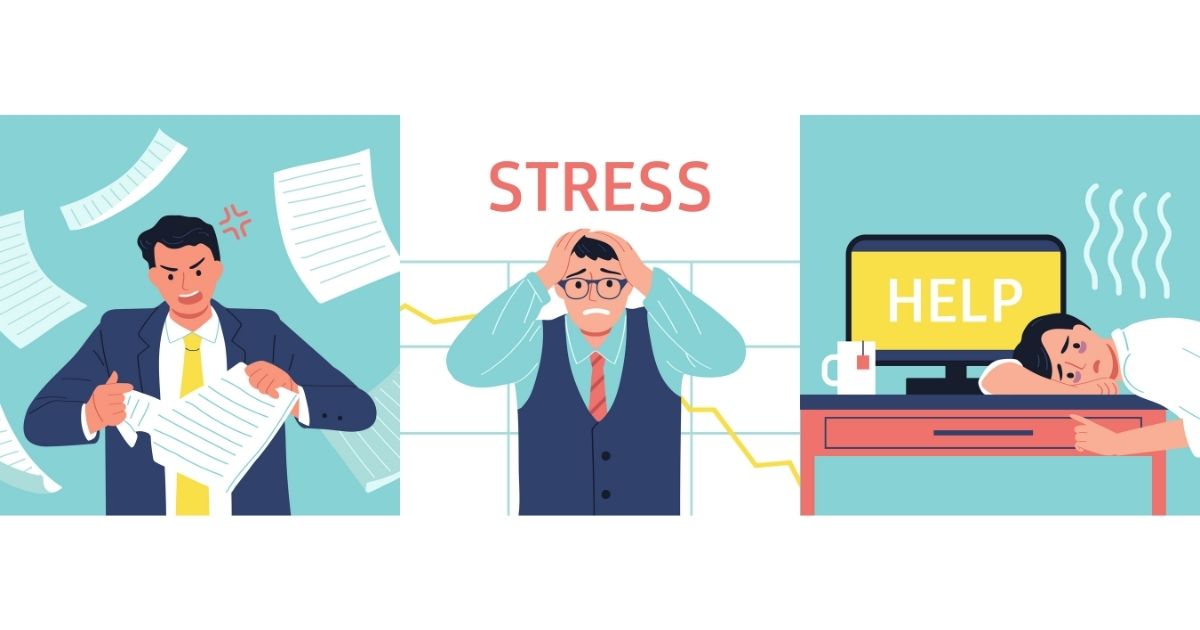Dr. Sahya Dev

The theme for World Mental Health Day 2024, “It is time to prioritise mental health in the workplace,” builds upon previous years’ themes, which emphasized the importance of fostering mental health in an unequal world and recognizing mental health as a fundamental human right. This year’s theme encourages continued efforts in several key areas, such as educating individuals and organizations on the significance of mental well-being, supporting the Shine Hope framework, offering employee volunteer opportunities to teach the Hopeful Minds program, and preparing leaders to foster a culture of hope across global workplaces.
Long before the pandemic gained prominence, mental health and wellness were already crucial factors in the workplace. In 2024, companies are increasingly urged to check in on their employees’ well-being in order to retain talent and create supportive work environments.
Managing stress and burnout, leading with empathy, and promoting a healthy work-life balance are effective strategies for supporting mental health in the workplace. While excessive workloads are often seen as the primary source of mental health challenges, other contributing factors should not be overlooked. For many individuals, the combined pressure of both personal and professional obligations becomes overwhelming and difficult to manage.
Workplace stress can stem from a variety of sources. For example, when job demands exceed an individual’s capacity—due to long hours or heavy responsibilities—they may feel overwhelmed. Other stressors include interpersonal conflicts, frequent organizational changes, and concerns over job security, such as the fear of redundancy. According to the National Health and Safety Commission, workplace stress is a leading cause of prolonged absenteeism. It is essential to recognize that stress is subjective; what may be stressful for one person could be stimulating or manageable for another. Factors such as the nature of the work, an individual’s emotional resilience, and their broader life circumstances—including personal health—shape their experience of stress.
Common Workplace Stress Factors

Job Role and Workload:
- Overwork: Employees are frequently asked to take on tasks beyond their job descriptions, sometimes without sufficient training, creating added pressure. Excessive workloads and unrealistic deadlines further exacerbate this issue, leaving employees struggling to keep up.
- Work Pace: Time pressures, long hours, and unpredictable or poorly structured shift patterns contribute to stress and fatigue.
- Lack of Variety: Repetitive tasks or jobs that lack engagement and challenge can lead to boredom, reducing motivation and job satisfaction.
- Participation and Control: Employees often experience stress when they feel they have little control over their work processes, schedules, or methods. Exclusion from decision-making can leave them feeling undervalued and powerless.
Work-Life Balance:
- Conflicting Demands: Balancing work responsibilities with home life can be a significant source of stress, especially when the workplace offers little flexibility or support.
- Financial Strain: External financial pressures, such as rising inflation, housing costs, and childcare challenges, can exacerbate stress and anxiety outside of work.
- Lack of Support: In the absence of policies supporting work-life balance, employees may struggle to manage personal or family responsibilities while meeting work demands.
Career Development and Job Security:
- Job Uncertainty: Fears about job displacement due to automation, AI, or organizational changes can create anxiety and insecurity. Financial constraints within companies may lead to limited opportunities for raises, promotions, and benefits.
- Under- or Over-Promotion: When employees are either over-skilled or under-skilled for their roles, combined with a lack of promotion opportunities, they may feel stuck, leading to frustration and dissatisfaction.
- Unclear Performance Expectations: Vague job descriptions, conflicting demands, and poorly defined evaluation systems can create confusion about role expectations, increasing stress levels.
Interpersonal Relationships:

- Poor Workplace Relationships: Inadequate supervision, lack of support, and strained relationships with colleagues can contribute to a toxic work environment, heightening stress.
- Bullying and Harassment: Workplace bullying, harassment, or violence are severe stressors that can have lasting effects on employees’ mental and emotional well-being.
- Isolation: Employees working in solitary environments or with minimal social interaction may experience feelings of isolation, which can exacerbate stress.
Organizational Culture:
- Poor Communication and Leadership: Organizations with unclear objectives, weak communication, and ineffective leadership create confusion and instability, leading to increased stress levels.
- Unclear Objectives: Employees who lack clarity about their company’s direction or their role in achieving its goals may experience confusion, disengagement, and stress.
Self-help for Work-Related Stress
Individuals dealing with work-related stress can take several proactive steps to manage their well-being, including:
- Track Your Stressors: Keep a journal for one to two weeks, noting situations that trigger stress and how you respond. By identifying patterns, you can pinpoint areas in your work-life that need attention.
- Identify Stressors and Discuss with Employer: List the stressors you experience at work and determine which ones are within your control and which require external support. Consider meeting with your employer or HR to discuss reasonable adjustments that could help alleviate stress.
- Organize Tasks by Priority: Start each day by listing tasks and ranking them by importance. Tackle the most challenging ones first, when you are fresh. This can help reduce the feeling of being overwhelmed by multiple priorities.
- Develop Healthy Responses: Opt for healthy stress-relief activities like exercise, yoga, or walking, rather than unhealthy coping mechanisms like alcohol or junk food. Regular physical activity is a great way to manage stress.
- Establish Boundaries: In today’s digital age, it’s easy to feel compelled to remain connected to work. Set boundaries—such as no work emails after hours or turning off notifications during personal time—to help reduce burnout and preserve relaxation time.

- Relaxation Practices: Incorporate mindfulness, meditation, or yoga into your routine. Even 10–15 minutes of relaxation can help reduce stress and enhance focus.
- Maintain Work-Life Balance: Schedule regular time off for yourself to relax and recharge. Taking vacations or breaks helps prevent burnout and supports long-term well-being.
- Self-Care Routine: Engage in regular exercise, maintain a balanced diet, and stay hydrated. Small changes, like taking short walks or stretching throughout the day, can ease physical tension and improve mood.
- Learn How to Relax: Incorporate techniques like deep breathing or mindfulness into your daily life. These methods can help calm your mind and improve focus, even during stressful moments.
- Open Communication with Loved Ones: Sharing your work-related stress with friends or family can provide emotional support, practical advice, and new perspectives on managing stress.
- Avoid Substances: Limit or avoid alcohol and smoking, as they can worsen stress and contribute to health problems. Opt for healthier ways to unwind, such as exercising, practicing relaxation techniques, or pursuing hobbies.
- Take Time to Recharge: Step away from work regularly to refresh and rejuvenate. Engage in activities that bring you joy or simply rest to avoid chronic stress.
- Talk to Your Supervisor: Openly discuss stress with your supervisor, focusing on potential solutions. This can include adjusting workload, clarifying expectations, or improving the work environment. Many employers offer wellness programs, counseling services, or flexible work arrangements.
- Get Support from Others: Reach out to trusted friends, family, or colleagues for support. Many workplaces offer Employee Assistance Programs (EAPs) that provide counseling and mental health resources.
Stress is a natural response to challenges, and shows the individual’s ability to cope with it varies. While some level of stress can be motivating and lead to personal growth, excessive or persistent stress can harm both physical and mental health, leading to burnout and decreased productivity. It is essential to address the root causes of stress and develop proactive, long-term strategies for managing it effectively.
By acknowledging the sources of stress and creating personalized plans for managing it, individuals and organizations can foster healthier work environments and better overall well-being.
Authors Biography
Dr. Sahya Dev holds an MBBS from Kannur Medical College and an MD in Community Medicine from Pushpagiri Institute. She also completed a Fellowship in Diabetology (CCEBDM, PHFI). With over two years of academic experience, she has published research articles and contributed to medical publications. Her areas of interest include adolescent health, noncommunicable diseases, occupational health, mental health, COVID-19, and public health. She is involved in health-related training and advocacy.

